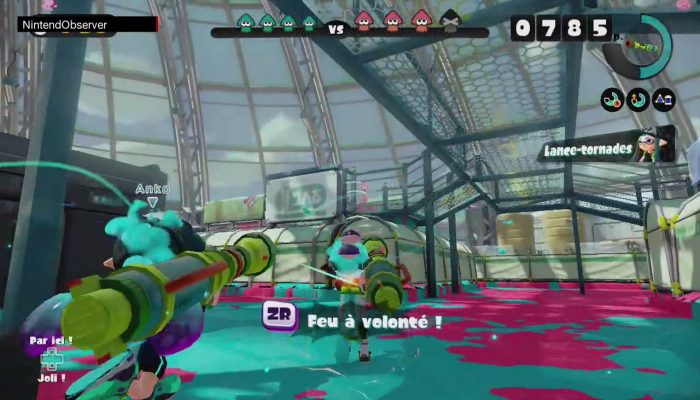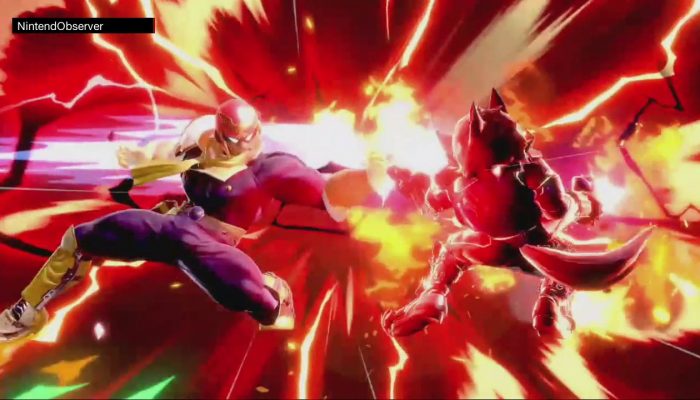 Boosts and Bursts. Life Gauge and Energy Gauge.
Boosts and Bursts. Life Gauge and Energy Gauge.
☆ NintendObs Weekly – Monday, March 3, 2014 – Sunday, March 9, 2014.
I should probably start by describing the series for those who might not know it that much, but I will do so from my own experience as a fan. I have been into F-Zero since F-Zero X on the Nintendo 64 and played the franchise with F-Zero: Maximum Velocity on the Game Boy Advance and F-Zero GX on the Gamecube. I also had the opportunity to play F-Zero AX (the arcade version of F-Zero GX) as well as the very first F-ZERO on an actual SNES (before the lovely Wii U Virtual Console re-release). In retrospect, that would be all the F-Zero games we have seen here in the West — or least in Europe where I’m from –, so I might as well describe the games in order of their time of release.
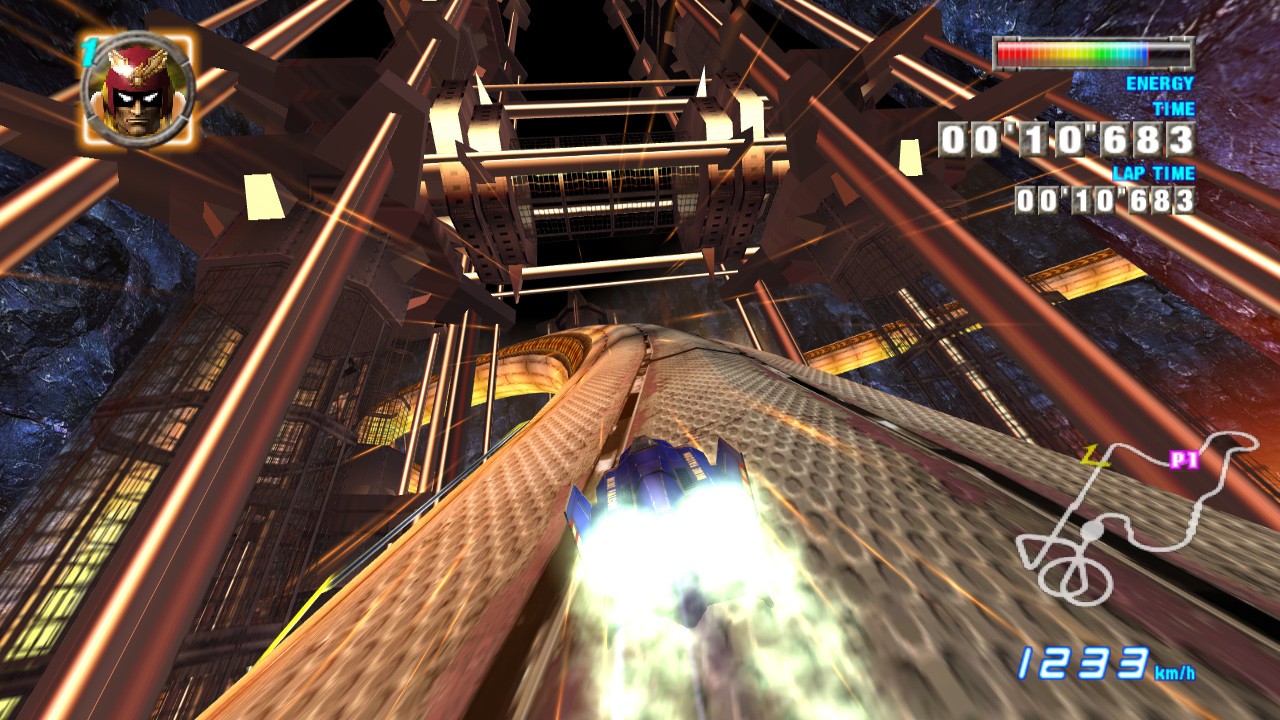
The F-Zero Franchise
F-Zero is a series of futuristic racing games in which you drive powerful machines at very, very high speeds in races that are competitive both for the number of opponents you have to face and for the difficulty of their tracks. A trademark of F-Zero is the ability for machines to boost once granted possibility upon the second lap of the race, allowing them to reach higher speeds for a limited time, taking a drastic advantage over other racers were they not to do the same. But higher speed does mean lesser maneuverability, and boosting often has a detrimental effect; therefore boosts have to be used in ways that challenge the player to choose the right balance between efficiency and safety: being the fastest while ensuring you’re still in the game.
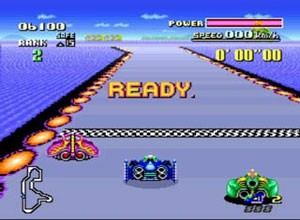
The first F-Zero on the SNES (F-ZERO) established these clear benchmarks for all the subsequent games. Later on came F-Zero X on Nintendo 64 which changed the boost structure of the original game. While F-ZERO had a system that awarded one lengthy boost at the end of each lap, F-Zero X brought a new system that used the machines’ energy level to power several shorter boosts: if boosting in F-ZERO meant just using a power-up, boosting in F-Zero X literally meant risking your life. In that line of thought, F-Zero X introduced side and spin attacks for runners to hit and deliberately kill one another on the race. A deeper level of strategy was thus established: should one risk boosting too much and die crashing on a wall at max speed? Should one risk cruising too fast and drift off the road as a result? Or should one boost away from their opponents only to fail to distance them and get killed once they keep up? Indeed, from then on, F-Zero clearly became a game that maxes out on difficulty.
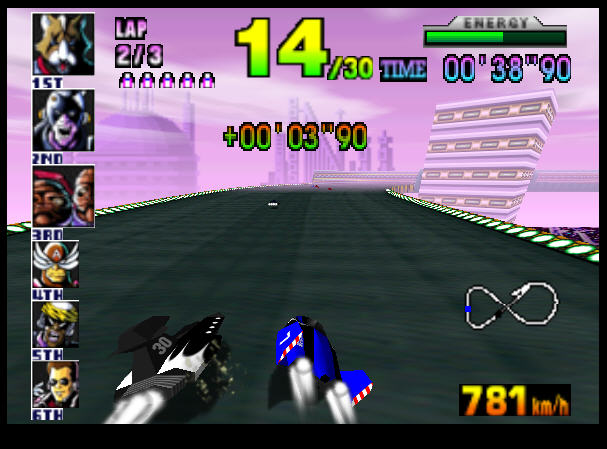
Next came F-Zero: Maximum Velocity on the Game Boy Advance, the first handheld F-Zero, which reinstated the principles of the very first F-ZERO: boosts were longer and unique, while attacks from F-Zero X didn’t make it back into the handheld release. As its Japanese name implied, F-Zero: Maximum Velocity was quite literally the original “F-ZERO for Game Boy Advance” in terms of features.
But the paragon of F-Zero, the one that set the game to heights that have yet to be achieved in racing games in over a decade, is F-Zero GX: the very last console installment of the series, on the Gamecube.
In a nutshell, F-Zero GX had everything F-Zero: unprecedented speed, massive roster, ridiculous tracks, enhanced trademark difficulty…
Average cruising speed: 1,000 km/h. When boosting, the machines could easily reach speeds such as 1,500 km/h; I’ll never forget my max speed with Mighty Gazelle, diving at 3,006 km/h in Cosmo Terminal “Trident.” And trust me, 100 km/h in F-Zero GX IS 100 km/h in real life, just like 300 km/h in F-Zero GX is your topping 300 km/h in a Need For Speed.
More than 40 characters, 30 racing at the same time in the Grand Prix. Just like F-Zero X before, the game allowed so many machines on the race that one could only struggle to find their way through, sometimes dying in an instant without knowing where that spin attack actually came from.
Tracks as beautifully crafted as they were complex and hard to complete. Mute City, Port Town, Aeropolis, Green Plant, Big Blue… “Multiplex,” “Loop Cross,” “Aero Dive,” “Split Oval,” “Half Pipe,” “Mobius Ring,” “Drift Highway,” “Trident,” “Long Pipe,” “Ordeal…”
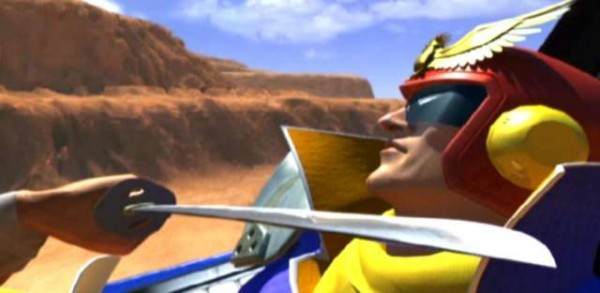
But I digress.
All this goes to show the legacy of the F-Zero franchise; the understanding of which I hope I have shared with you, and an understanding I am based upon in my ideas for a next installment of F-Zero, on the Wii U.
F-Zero Wii U, Let’s Dream It: Unlocking the Franchise‘s Legacy
Let’s start with the most obvious: a brand-new HD console calls for brand-new HD graphics. It would be a first for F-Zero, and one that would be quite noticeable and duly appreciated. Livelier machines, livelier stages, livelier environment… The world of F-Zero as if it was real out there on the TV screen. But when it comes to HD, I would not be so quick as to impose 1080p graphics, the reason behind this being that first and foremost F-Zero REQUIRES an unwavering 60fps framerate: and when I say unwavering, I mean it in every aspect of the game, and especially in the massive online multiplayer I will be describing later on. After all, I don’t believe any racer deserves to die because of a split second of unwanted technical difficulties.
As I would expect the next F-Zero to have machines running at at least the same speed as in F-Zero GX, it seems indubitable how small a difference resolution would make in such a game, which is why it’s best to keep that extra power for other features.
With that out of the way, onto the gameplay.
I call for two new, groundbreaking additions, that are actually just a clever mix of what the F-Zero franchise has proposed over the years, which I previously described for that purpose: I would like for the new F-Zero game on Wii U to implement a new boost system and a new energy system, the former to be made of two complementary types of boosts and the latter of two different types of energy gauges.
When it comes to boosts, the player would have the ability to either “Boost” or “Burst.” The Boost would be the short boosts akin to F-Zero X and F-Zero GX, granting the ability to quickly gain high speeds for an estimated range of 1 to 3 seconds. The Burst would be more like the boosts of F-Zero and F-Zero: Maximum Velocity, bringing longer and more profuse heights of speed, though would take more time to build up and would reach a higher max speed than the Boost. As I would suggest the same F-Zero GX speeds in this next installment — which already gave a hard time to many — it would look like this: while Captain Falcon’s Blue Falcon, cruising typically at around 1,000 km/h on ground, would reach a max speed of around 1,500 km/h with continuous Boosts, a Burst at full momentum would allow the Blue Falcon to top 2,000 km/h after about 7 seconds of activation and a drain of its entire energy gauge. A significant leap in speed at an even higher price.
Regarding the energy system, the machines would have a “Life Gauge” and an “Energy Gauge.” The Life Gauge would be the one that attests of the remaining sturdiness of the machine, going down progressively when the player is either hit or hurts themselves; however, contrarily to how it was in F-Zero X and F-Zero GX, using Boosts or Bursts would NOT lower the Life Gauge. This is where the Energy Gauge comes in, affected only by Boosts and Bursts: it is the gauge that dictates how many Boosts one can still use and for how long one would still be able to Burst. In effect, the Energy Gauge would be segmented so that one can easily see how many Boosts they have left. Once your Life Gauge empties, your machine would explode at the slightest contact, yet once your Energy Gauge gets emptied, you would no longer be able to Boost nor Burst. Furthermore, similar to F-ZERO and F-Zero: Maximum Velocity, a machine with a near-empty Life Gauge could see its velocity decrease due to the damage.
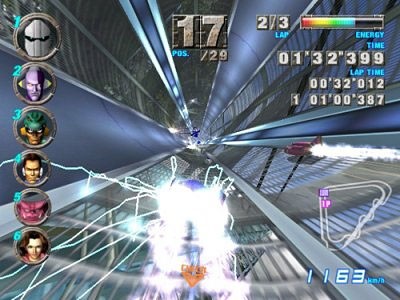
Now this could seem like a gameplay-killer at first for fans of F-Zero X and F-Zero GX (such as myself actually), but once given a thought it is possible to see in it a dual purpose: making the game more accessible to newcomers, while also making it drastically more strategic for veteran racers.
First of all, newcomers and people who were rebuked by the difficulty of the game would stay alive more easily and spend more time enjoying the game, simply because they would not have to fear dying from a small scratch while bringing to drought their Energy Gauge. They would have only their carelessness to blame were their machines to explode from damages or to fall off the road, yet their lack of experience to scorn at were they to get destroyed by other racers’ attacks.
However, there comes a deeper level of gaming, first implied by the differentiation between Boosts and Bursts. Those who have played F-Zero GX at a high level must probably be aware of the following: in F-Zero, how you allocate your boosts throughout the race is everything. To be as fast as you can, you have to have established beforehand where are the places where boosting will be the most effective. What’s more, you have to know how many boosts your character’s machine can afford and how lengthy those boosts are for a rightful allocation.
Here is an example of mine: in F-Zero GX’s Aeropolis “Multiplex” with Captain Falcon and his Blue Falcon, I boost once at the beginning, a second time when taking the jump, and a third time as I approach the following left then right turns; then here I go, boost in the straight line, boost in the 180°, boost in the new line, boost as it goes up, and boost as I nosedive, taking advantage of the momentum my 5 boosts have provided me to go over the top road, falling right into the regenerating zones to recover all of the boosts I had used as my energy gauge had just turned empty.
Now, for most this is hardcore stuff, but probably others with different characters — or even with Captain Falcon, but I doubt it — have different solutions for the same race with outstanding results. The issue is: at this high a level, solutions like this are scarce and hard to diversify.
That being said, this is where the combo of Boosts and Bursts comes in, bringing new possibilities to that “pre-game strategy.” For example, in the previous example instead of using my 5 last boosts before nosediving, I could use a Burst to progressively gain speed exponentially and be even faster. Or maybe someone else playing Captain Falcon would Burst in the beginning, taking advantage of his momentum to unleash faster Boosts and only need 4 of them where I previously needed 5. Quite frankly, coupled with the vast roster of the game – as an example F-Zero GX had 41 characters as well as customizable machines – the possibilities for a good “pre-game strategy” are tremendously higher than the previous scarcity I’ve been talking about.
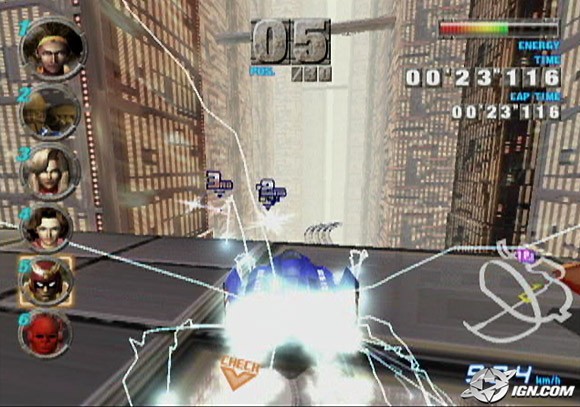
Yet that’s only “pre-game strategy,” because the Life Gauge and the Energy Gauge would provide that supplemental level of “in-game strategy.”
What was quite of a drawback in F-Zero GX was that here you were, racing on, boosting abound, and someone attacked you, reducing your life and essentially your boost levels at the same time. You were doomed: you lost speed, your abductor was gone, and you didn’t have the life/energy to reach them anymore… unless you were that much a better player than them – which shouldn’t happen neither at casual nor competitive levels.
With the Life and Energy Gauges, you lost some Life and speed, sure: but the ability you now have for revenge is much greater, since your Boosts and Burst are left unharmed.
What’s more, this dual system of gauges is also an opportunity for track design: there would be regenerating zones for both gauges – one type for the Life Gauge, and one for the Energy Gauge. For the sake of a respectable level of difficulty, the Life Gauge regenerating zone would take more time than the Energy Gauge’s to replenish a machine, such as at equal length, while the “Energy Zone” would replenish a player’s Energy Gauge completely, the “Life Zone” would only replenish their Life Gauge to half. For track designs, this would mean that sometimes there could be Life Zones and Energy Zones right next to each other, or zones that are apart or even combined… or there might even be stages with no Life Zones at all.
Here is an example of “in-game strategy” in action. Imagine yourself racing, leading the others by just a few seconds. The third and last lap is approaching, and your Life Gauge is nearly empty but so is your Energy Gauge. Should you go the way of the Life Zone to ensure you stay alive, or should you bet it all on the Energy Zone to be able to take off again? Maybe you could slowly slide in the Life Zone then steer yourself right back in the Energy Zone, getting the Life you need to survive and the Energy you need to succeed through laudable driving skills; but the road is actually split so… which way would you choose?
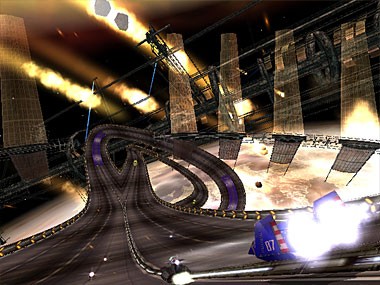
At NintendObserver, the comments are on Discord.
Click on Community to learn more. 🙂
…
…Wanna play? Buy a Wii U.
And if you’ve already got yours, here are all the games already available on the platform. 😀

